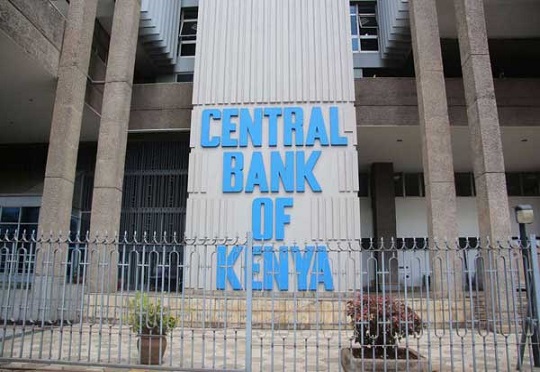
The Monetary Policy Committee (MPC) met on December 5, 2023, against a backdrop of continued global uncertainties, volatility in international oil prices, a weak global growth outlook, and escalation of geopolitical tensions. In addition, the Committee noted persistent
domestic inflationary pressures and a depreciating shilling.
The MPC reviewed the outcomes of its previous decisions and measures implemented to mitigate the adverse economic impact and
financial disruptions.
• Global growth is expected to decelerate from 3.0 percent in 2023 to 2.9 percent in 2024, reflecting the impact of high interest rates in advanced economies, weakening demand particularly in China and the Eurozone, heightened geopolitical tensions particularly the ongoing Israel-Palestinian conflict as well as the Russia-Ukraine war, which continue to weigh down on economic activity.Additionally, headline inflation rates in advanced economies have continued to ease, but remain above their respective core inflationary targets.Global food prices have declined from the peak levels witnessed in 2022, except for a few items such as sugar and rice.

• Kenya’s overall inflation remained broadly unchanged at 6.8 percent in November 2023, compared to 6.9 percent in October, but has remained sticky in the upper bound of the Government’s target range since July 2023. Food inflation declined slightly to 7.6 percent in
November from 7.8 percent in October, largely on account of lower prices of key non- vegetable food items particularly maize and wheat flour following improved supply attributed to the ongoing harvests and Government measures to zero-rate key food imports.
Nevertheless, prices of a few vegetables particularly onions, tomatoes, and carrots, remained elevated in November due to reduced supply. Fuel inflation increased to 15.5 percent in November from 14.8 percent in October, reflecting the impact of higher international oil prices and depreciation in the shilling exchange rate.
Non-food non-fuel (NFNF) inflation declined modestly to 3.3 percent in November from 3.6 percent in October. The risks to inflation are elevated in the near term, reflecting the impact of second-round effects of the rise in fuel inflation and pass-through effects of the exchange rate depreciation.
• The Survey of the Agriculture Sector conducted ahead of the MPC Meeting revealed that prices of key food items were expected to decline on account of improved supply due to the ongoing rains. Nevertheless, respondents expect prices of some consumer goods to rise in the coming months due to higher transport and energy costs attributed to the increase in fuel prices, and a rise in import costs due to depreciation of the exchange rate.
• The GDP data for the second quarter of 2023 indicates continued strong performance of the Kenyan economy, with real GDP growing by 5.4 percent compared to 5.2 percent in a similar quarter of 2022.This performance reflects a strong rebound in the agriculture sector, and resilient services sector supported by robust activity in information and communication, transport and storage, financial and insurance, and accommodation and food services.
Leading indicators of economic activity show continued strong performance in the third quarter of 2023. Despite the global uncertainties, the economy is expected to continue to strengthen in 2023 and remain strong in 2024, supported by a resilient services sector, the rebound in agriculture, and implementation of measures to boost economic activity in priority sectors by the Government.
• The CEOs Survey and Market Perceptions Survey which were conducted ahead of the MPC meeting revealed tempered optimism about business activity for the next 12 months.Respondents expressed concerns about weakened consumer demand, and increased costs of
doing business attributed to the weakening of the Kenya shilling, taxation, and higher energy costs. Nonetheless, respondents remained optimistic that economic growth would remain resilient in 2023 and improve in 2024, supported by increased agricultural production.
• Goods exports declined by 2.0 percent in the 12 months to October 2023, compared to a similar period in 2022. Receipts from chemicals and manufactured exports increased by 5.1 percent and 13.9 percent, respectively.
The increase in manufactured exports receipts reflects strong regional demand.Imports declined by 14.9 percent in the 12 months to October 2023 compared to a growth of 14.7 percent in a similar period in 2022, mainly reflecting lower imports across all categories except food. Tourist arrivals improved by 34.1 percent in the 12 months to October 2023, compared to a similar period in 2022.
Remittances totalled USD 4,165 million in the 12 months to October 2023, and were 4.2 percent higher compared to a similar period in 2022. The current account deficit is estimated at 3.7 percent of GDP in the 12 months to October 2023, and is projected at 4.1 percent of GDP in 2023 and 4.2 percent of GDP in 2024.
• The CBK foreign exchange reserves, which currently stand at USD 6,746 million (3.62 months of import cover), continue to provide adequate cover and a buffer against any short- term shocks in the foreign exchange market.
• The banking sector remains stable and resilient, with strong liquidity and capital adequacy ratios.The ratio of gross non-performing loans (NPLs) to gross loans stood at 15.3 percent in October 2023 compared to 15.0 percent in August 2023. Increases in NPLs were noted in the
manufacturing, trade, personal and household, building and construction, and transport and communication sectors. Banks have continued to make adequate provisions for the NPLs.
• Growth in private sector credit remained relatively stable at 12.5 percent in October 2023 and 12.2 percent in September. Strong credit growth was observed in the following sectors: manufacturing (18.4 percent), transport and communication (16.2 percent), trade (9.9
percent), and consumer durables (10.8 percent).The number of loan applications and approvals remained strong, reflecting sustained demand particularly for working capital requirements.
• The Committee noted the ongoing implementation of the FY2023/24 Government Budget, as well as the revised budget for the fiscal year which continues to reinforce fiscal consolidation.
The MPC noted that exchange rate depreciation continues to exert upward pressure on domestic prices, thereby increasing the cost of living and reducing purchasing power. Of the overall inflation of 6.8 percent in November 2023, the exchange rate depreciation contributed about 3.0 percentage points.
Additionally, the Committee noted that public sector external debt service has risen, thereby offsetting some of the gains made towards the Government’s strong fiscal consolidation.Further, the continued weakening of the exchange rate is contributing to a significant increase in the Kenya shilling value of foreign currency denominated debt.
The MPC therefore concluded that there is need to adjust the monetary policy stance to address the pressures on the exchange rate and mitigate second round effects including from global prices.This will ensure that inflationary expectations remain anchored, while setting inflation on a firm downward path towards the 5.0 percent mid-point of the target range.
Therefore, the MPC decided to raise the Central Bank Rate (CBR) from 10.50 percent to 12.50 percent.The MPC will closely monitor the impact of the policy measures as well as developments in the global and domestic economy and stands ready to further tighten monetary policy as necessary to ensure price and exchange rate stability are achieved, in line with its mandate. The Committee will meet again in February 2024.





